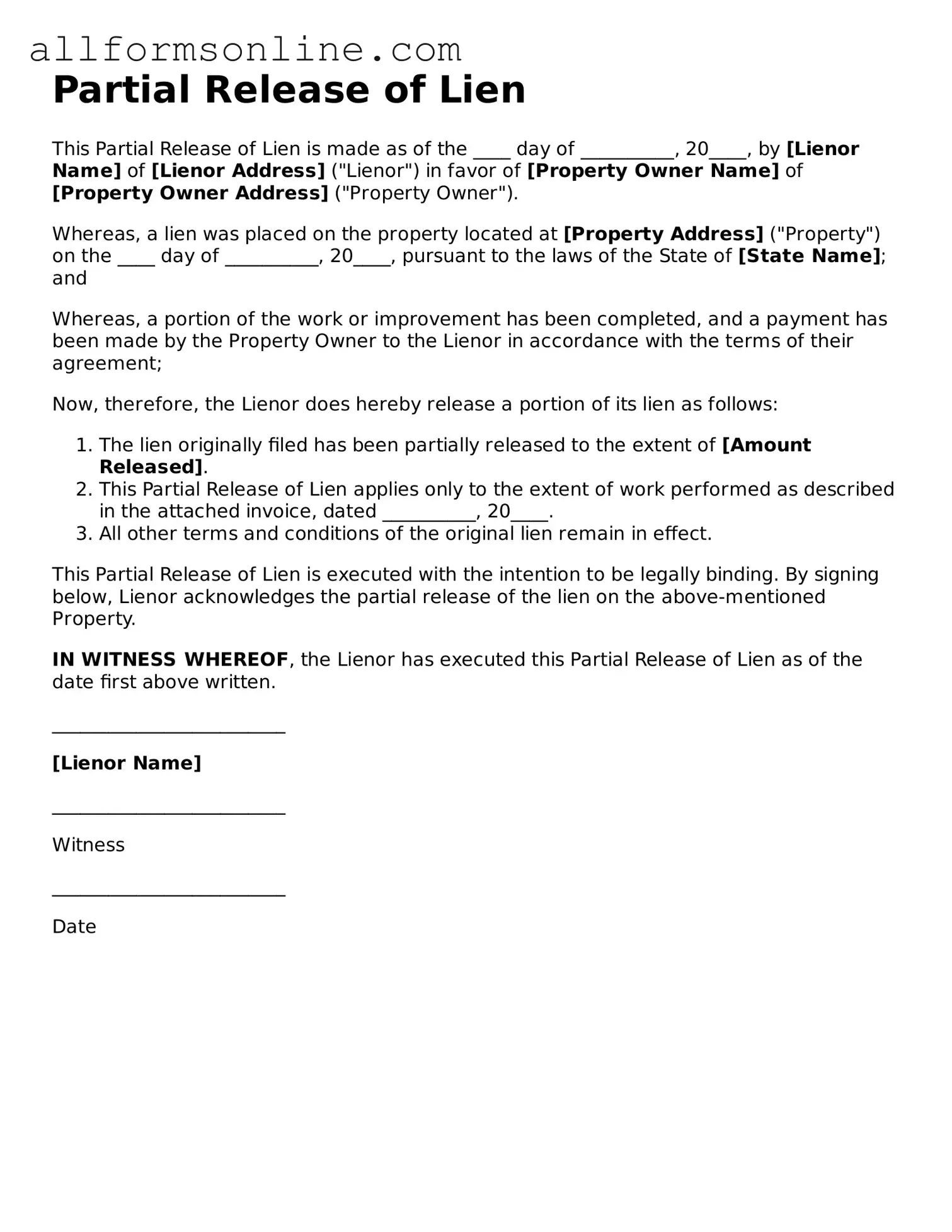What is a Partial Release of Lien form?
A Partial Release of Lien form is a legal document used to remove a lien on a specific portion of a property or project. This form is typically used when a contractor or supplier has been paid for part of their work but still holds a lien on the entire property. By filing this form, they acknowledge that they are releasing their claim on the portion that has been paid, while still retaining the right to claim on the unpaid portion.
When should I use a Partial Release of Lien?
You should use a Partial Release of Lien when you have received payment for a specific part of your work or services but still have outstanding payments for other parts. This form helps clarify which parts of the project are paid for and which are not. It protects both the property owner and the contractor by ensuring that there is a clear record of payments made and claims still in effect.
How do I fill out a Partial Release of Lien form?
To fill out a Partial Release of Lien form, start by providing your name and the name of the property owner. Include details about the property, such as the address and legal description. Next, specify the amount that has been paid and the specific work or services related to that payment. Finally, sign and date the form. It may also be necessary to have the form notarized, depending on your state’s requirements.
What happens after I file a Partial Release of Lien?
After filing a Partial Release of Lien, the lien on the specified portion of the property is officially removed. The property owner should receive a copy of the filed document for their records. It is important to keep a copy for your own records as well. If there are still outstanding payments, the lien remains in effect for those amounts. Always ensure that the release is properly recorded with the appropriate local government office to avoid any future disputes.
